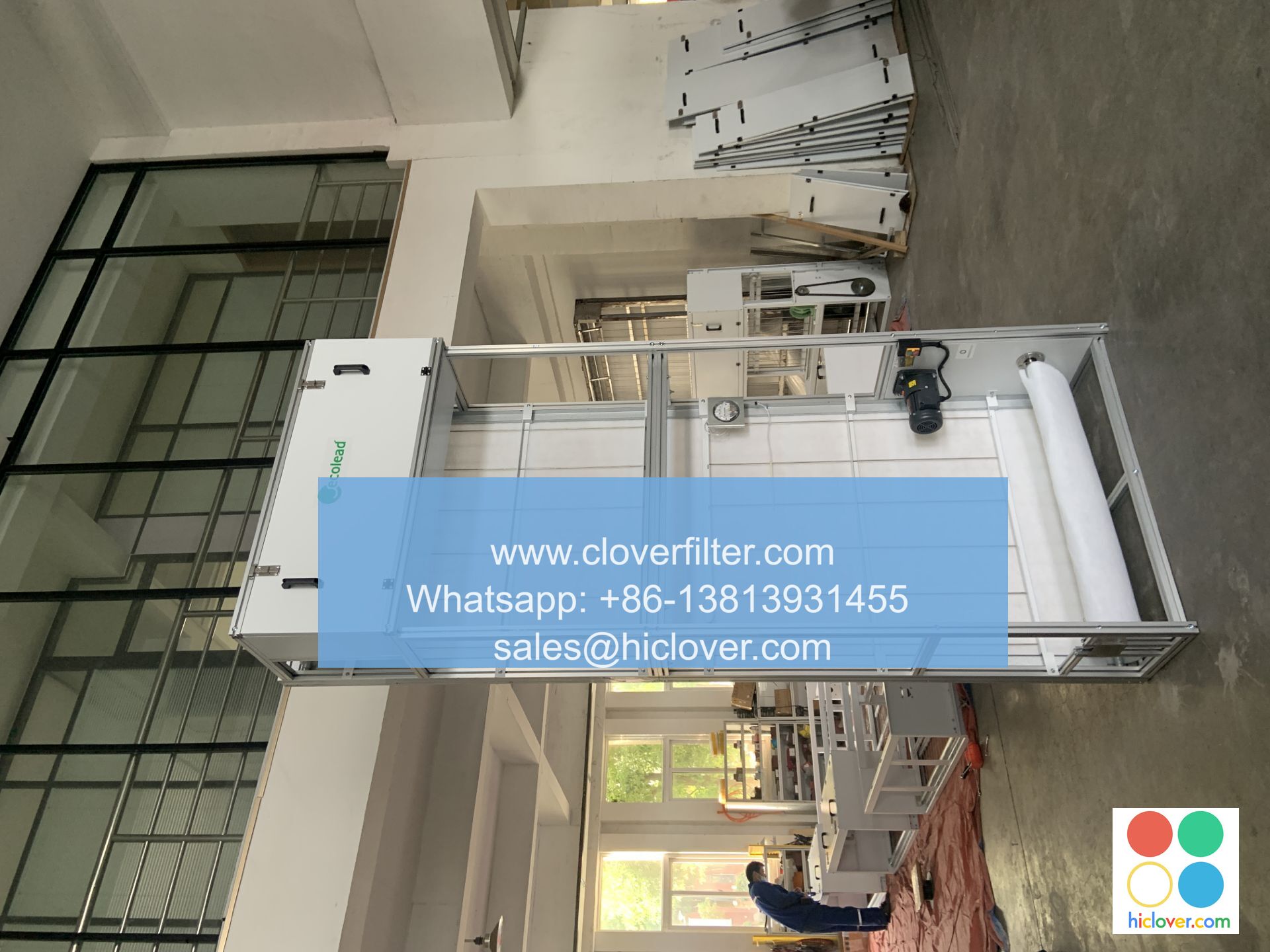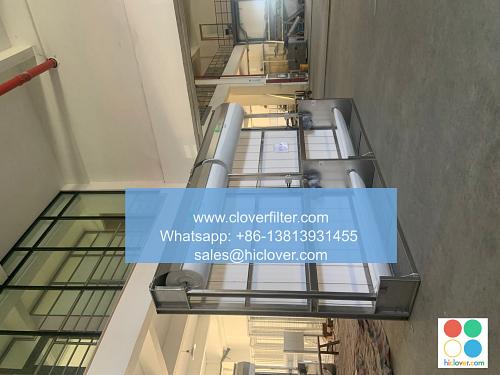Air Filters and Climate Change: A Guide

Air pollution and climate change are two of the most pressing issues of our time, and they are closely linked. The increasing levels of greenhouse gases in the atmosphere, such as carbon dioxide and methane, are contributing to global warming, which in turn is exacerbating air pollution. One effective way to mitigate the effects of air pollution and climate change is through the use of air filters. In this article, we will explore the relationship between air filters and climate change, and highlight various application areas where air filters can make a significant impact.
Understanding the Link between Air Pollution and Climate Change
Air pollution and climate change are interconnected issues. The burning of fossil fuels, such as coal, oil, and gas, releases pollutants into the atmosphere, including particulate matter (PM), nitrogen oxides (NOx), sulfur dioxide (SO2), and volatile organic compounds (VOCs). These pollutants contribute to the formation of ground-level ozone and fine particulate matter, which can cause respiratory problems and other health issues. At the same time, the increasing levels of greenhouse gases in the atmosphere are leading to global warming, which in turn is exacerbating air pollution by increasing the formation of ground-level ozone and particulate matter.
The Role of Air Filters in Mitigating Air Pollution and Climate Change
Air filters can play a crucial role in mitigating the effects of air pollution and climate change. By removing pollutants and particulate matter from the air, air filters can help to improve indoor and outdoor air quality, reduce the negative impacts of air pollution on human health and the environment, and contribute to the reduction of greenhouse gas emissions. There are various types of air filters available, including HEPA filters, activated carbon filters, and electrostatic filters, each with its own unique characteristics and application areas.
Application Areas for Air Filters
Air filters have a wide range of applications, including:
* Indoor Air Purification: Air filters can be used in homes, offices, and other indoor spaces to remove pollutants and particulate matter from the air, improving indoor air quality and reducing the negative impacts of air pollution on human health.
* Industrial Air Pollution Control: Air filters can be used in industrial settings to remove pollutants and particulate matter from the air, reducing the negative impacts of air pollution on the environment and human health.
* Transportation: Air filters can be used in vehicles to remove pollutants and particulate matter from the air, improving air quality and reducing the negative impacts of air pollution on human health and the environment.
* Agriculture: Air filters can be used in agricultural settings to remove pollutants and particulate matter from the air, reducing the negative impacts of air pollution on crop yields and human health.
Benefits of Using Air Filters
The use of air filters has several benefits, including:
* Improved Air Quality: Air filters can remove pollutants and particulate matter from the air, improving indoor and outdoor air quality and reducing the negative impacts of air pollution on human health and the environment.
* Reduced Greenhouse Gas Emissions: By removing pollutants and particulate matter from the air, air filters can contribute to the reduction of greenhouse gas emissions and help to mitigate the effects of climate change.
* Energy Efficiency: Air filters can help to improve the energy efficiency of buildings and vehicles by reducing the need for heating and cooling, and by improving the performance of engines and other machinery.
* Cost Savings: The use of air filters can result in cost savings by reducing the need for medical treatment and lost productivity due to air pollution-related illnesses, and by improving the efficiency of buildings and vehicles.
Conclusion
In conclusion, air filters play a critical role in mitigating the effects of air pollution and climate change. By removing pollutants and particulate matter from the air, air filters can help to improve indoor and outdoor air quality, reduce the negative impacts of air pollution on human health and the environment, and contribute to the reduction of greenhouse gas emissions. As the world continues to grapple with the challenges of air pollution and climate change, the use of air filters will become increasingly important. By understanding the link between air pollution and climate change, and by highlighting the various application areas for air filters, we can work towards a cleaner, healthier, and more sustainable future.
Key Words: Air Filters, Climate Change, Air Pollution, Indoor Air Purification, Industrial Air Pollution Control, Transportation, Agriculture, Greenhouse Gas Emissions, Energy Efficiency, Cost Savings.
Note: The article has been written in a way that it is easy to understand and free of any complex jargon. However, the key points and the application areas have been Highlighted using HTML headings and bolding the key words for better understanding.
It seems like you’re looking for a prompt to start a conversation or generate some creative content. Here are a few ideas across different categories to get you started:
For Writing or Storytelling
- Future City: Imagine a city 100 years in the future. Describe its architecture, transportation, and how people live their daily lives.
- Time Traveler’s Dilemma: You’ve discovered a time machine that can take you back to any historical event. However, you can only observe and cannot interact with anyone. Where do you go and why?
- The Last Memory: In a post-apocalyptic world where memories can be extracted from one’s mind, you are one of the few who have managed to retain your memories. Describe your last memory of the world before it ended.
For Art or Design
- Mythical Creature: Design a new mythical creature that has the ability to live in both water and on land. What does it look like? What powers does it have?
- Sustainable Future: Create a concept for a sustainable, eco-friendly community that can thrive with minimal impact on the environment. Include designs for homes, energy sources, and transportation.
- Galactic Landscape: Paint or describe a landscape of a planet in a distant galaxy. What are its geographical features? What kind of flora and fauna might it support?
For Personal Reflection or Journaling
- A Letter to My Future Self: Write a letter to yourself to be read 5 years from now. What goals do you hope to have achieved? What advice do you give yourself?
- Gratitude Journal: Reflect on the past week and list all the things you are grateful for. Why are they important to you? How have they positively impacted your life?
- Life in Seasons: Compare your life to the changing seasons. What season are you in currently? What does the next season hold for you, and how do you plan to embrace it?
For Conversational Prompts
- Travel Wishlist: If you could travel anywhere in the world right now, where would you go and why? What do you hope to experience or achieve during your trip?
- Favorite Books and Why: Discuss your favorite books and what made them so impactful to you. How have they influenced your perspective on life or your personal growth?
- Innovative Inventions: If you could invent something that doesn’t exist yet, what would it be? How would it work, and how would it change people’s lives?
Feel free to pick any of these prompts or use them as inspiration to explore your own interests and creativity!

